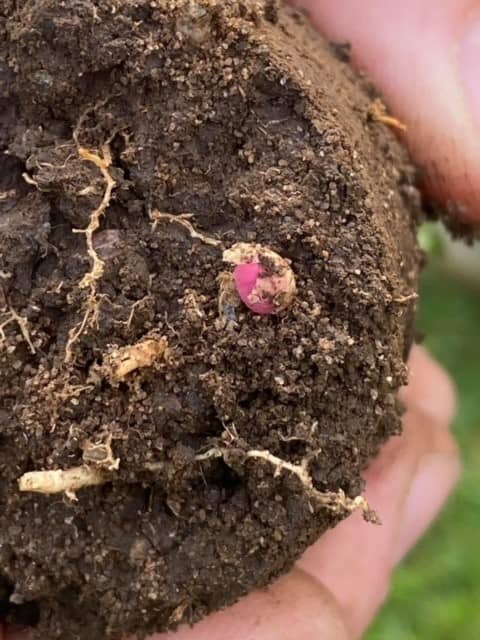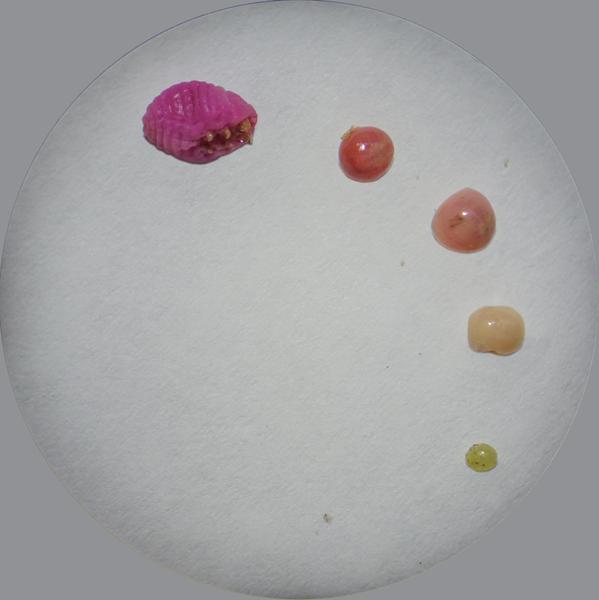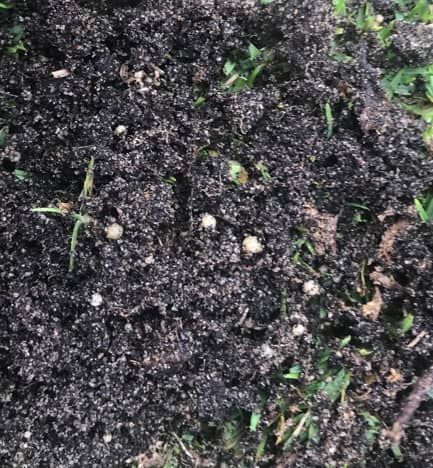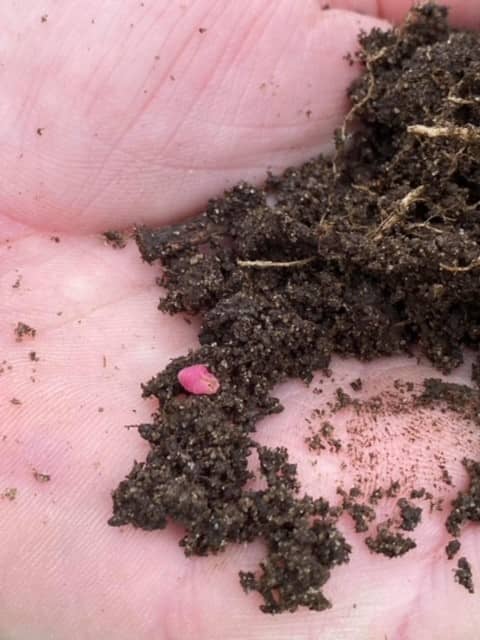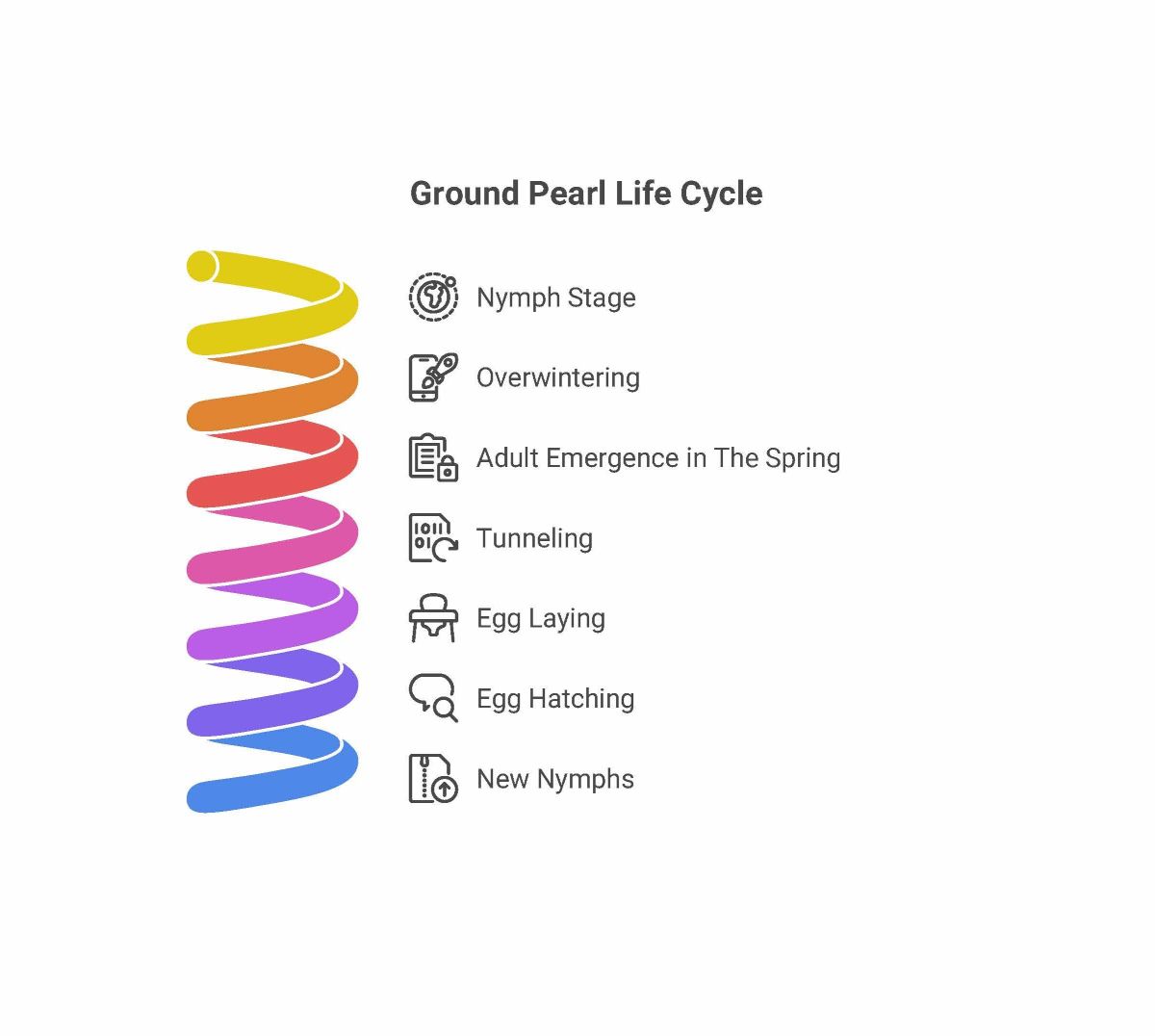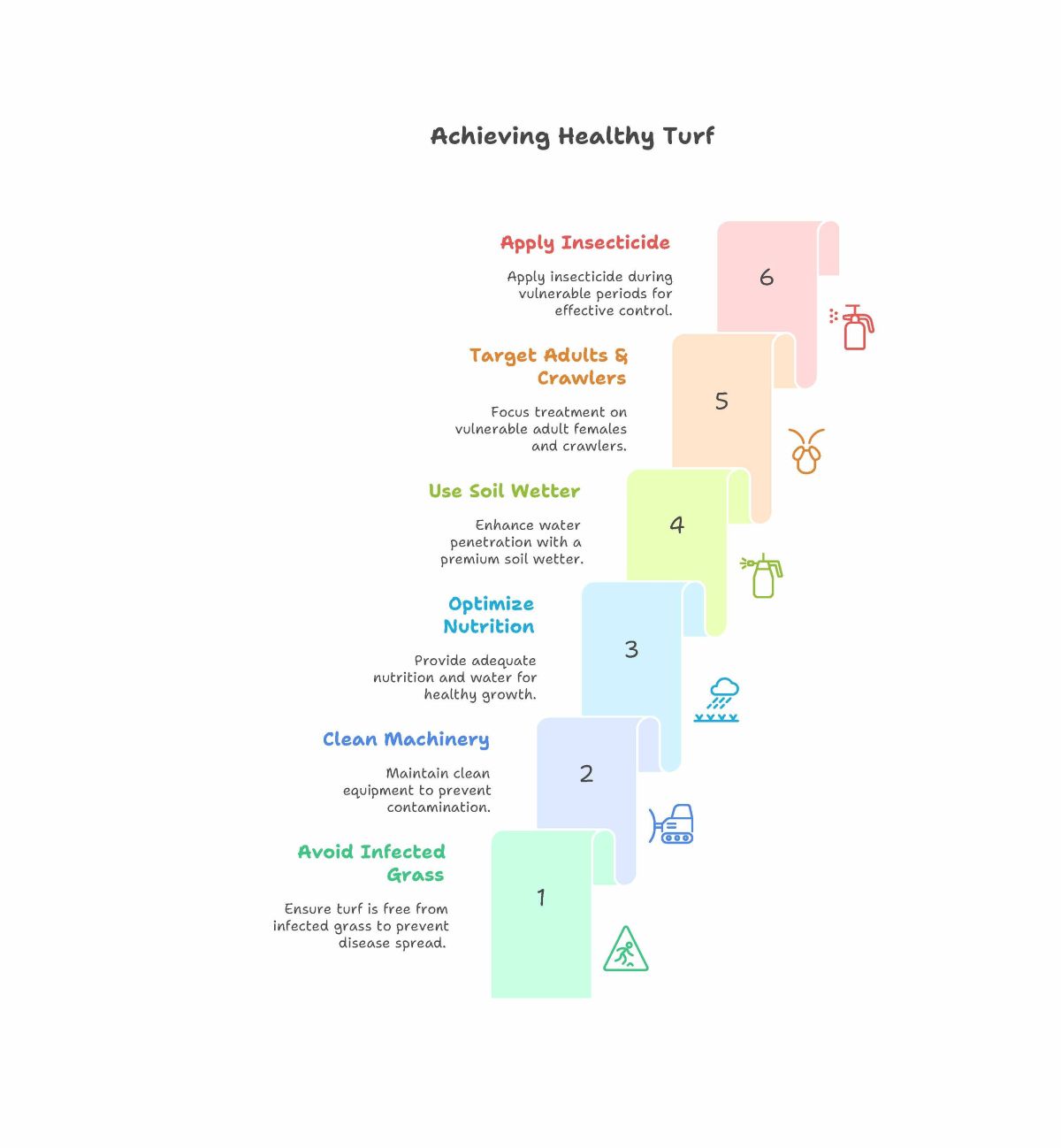Ground Pearl in Turf – How to Spot, Prevent, and Control.
This simple guide shows you how to spot, treat, and prevent Ground Pearl in turf.
What You Will Learn.
Ground Pearls are tiny insects that live in the soil and feed on grass roots.
They belong to the same family as scale insects. Their name comes from when they are young. At this stage they look like shiny, metallic pearls under the ground.
In Australia, Ground Pearls are found in parts of QLD, NSW, and WA.
They may also exist in other regions, but the full extent of their spread is still unknown.
They are serious pests on golf courses and bowling greens, a moderate problem in home lawns, and a significant pest in sugarcane crops in Queensland.
This guide shows you:
- How to spot and control them.
- Simple ways to protect your turf grass.
- How to get and keep your turf healthy.
Why They Are a Problem
- Ground Pearls spend most of their lives underground, hidden inside hard, round cysts.
- This stage—called the second instar nymph—is the one that damages turf.
- The insect feeds by inserting a straw-like mouthpart into the root and then sucks out sap.
- Because they live underground and move very little, infestations spread slowly.
- However, once established they can weaken turf and cause bare patches.
What They Look Like.
Ground pearls are a type of scale insect that lives in the soil. They belong to the family Margarodidae.
- They are small, pearl-like cysts, usually pink or white in colour.
- Nymphs cover themselves with a waxy shell, giving them a pearl-like look. Hence the name “ground pearl.”
- The nymphs are up to 1.5 mm in diameter1Buss EA. (May 2009). Insect Pest Management on Turfgrass. EDIS. (29 November 2012).
- The female is pink and has claws and front legs.
- The male is smaller than the female, and has a slender waxy “tail” that is up to 6 mm long.
- They attach themselves to turfgrass roots, where they suck out plant juices.
- When they feed it weakens the grass over time. This causes the turf to become thin and form dead patches.
Where You Find Them.
- Ground pearl in turf is most common in hot and humid areas.
- You usually find them 25 to 50 cm below the surface.
- They love sandy soils but can also live in other soil types.
- All types of grass can get them.
- They seem to prefer warm-season grasses.
- The good news is that not all turf areas will get problems with ground pearl.
- If you suspect you have this pest check the boundary between the healthy and chlorotic turf. This is where you will see the greatest numbers of Ground Pearl in turf2Potter, D.A. 1998. Destructive Turfgrass Insects: Biology, Diagnosis, and Control. Ann Arbor Press, Ann Arbor, Mich..
Signs of Ground Pearl Damage in Turf.
The issue with ground pearl in turf is that the symptoms can be confused with other problems.
Look out for:
- Patches of grass that turn yellow, and then brown off.
- It’s important to rule out other common soil pests like lawn grubs (scarabs), which can cause similar damage.
- Turf areas that thin out in irregular or ring-shaped patterns.
- The first sign is usually yellow patches that continue to get bigger. Your grass looks thin and weak in these areas.
- Dead spots appear that do not grow back, no matter what you try.
- The turf declines and does not improve when you water or apply fertiliser.
If turf declines despite good care, ground pearls may be the hidden cause.
The image below is courtesy of NC State Extension.
Biology & Lifecycle of Ground Pearl in Turf.
Understanding the lifecycle of this pest helps explain why they are so hard to control.
- Nymph stage. Ground pearls spend most of their life as nymphs, encased in waxy cysts under the ground.
- Overwintering. They survive the Winter inside these protective shells.
- Adults. In the late Spring or the Summer, females emerge from their cysts and reproduce.
- They then tunnel 50 to 75 mm into the soil, where they then secrete a wax coat.
- Inside this wax coat, they lay up to 100 eggs, and in the right conditions a female may lay eggs several times a year.
- It only takes a few days before the eggs hatch.
- Many females can reproduce without males. This is called parthenogenesis.
- Most have only one generation per year. However, some can remain dormant in the soil for years3Brandenburg, R. 2003. Don’t give up on ground pearls. Grounds Maintenance. (http://www.grounds-mag.com/mag/grounds_maintenance_dont_give_ground_2).. This is another reason control of this pest is difficult.
- Nymphs. New nymphs crawl a short distance, attach to roots, and then form new cysts.
Spread & Movement.
Ground pearls in turf spreas slowly on their own, and only move about 10 to 15 cm per year4Hoffman E, Smith RL. 1991. Emergence and dispersal of Margarodes meridionalis (Homoptera: Coccoidea) in hybrid bermudagrass. Journal of Economic Entomology 84: 1668- 1671.. However, human activity enables them to spread much faster. This can occur due to:
- Moving infested turf and soil to new sites.
- The movement of contaminated soil on turf equipment.
- Poor sanitation when you move or when you renovate turf.
- To avoid this always clean tools and avoid transfer soil from infested areas.
How to Manage Ground Pearl in Turf.
A. Cultural Practices.
Since chemical options are limited, cultural management is the backbone of any control program.
- Irrigation: Water turf in dry periods.
- Fertilisation: Apply balanced nutrients to reduce stress.
- Soil improvement: Use wetting agents to improve moisture retention.
- Compaction: Reduce any soil compaction.
- Mowing: Mow at the correct height with sharp blades.
- Resistant species: Where infestations are severe, try and use plant turfgrass varieties that are less affected. These include some varieties of couch, and zoysia.
B. Chemical Options.
Ground pearls are extremely tough to kill because their cysts protect them from insecticides.
- Many turf insecticides have little to no effect.
- Some research shows partial success when combining clothianidin with a soil wetting agent or if you use thiamethoxam over time.
- In Australia, the product Scarlet Trio Advanced (clothianidin, clofentezine, abamectin) has a label for the control of ground pearl in turf.
- The best time to treat for this pest is when the adults or crawlers are detected. This is usually from the early Spring to the end of Summer.
- Apply in 400 to 800 L/Ha of water.
- Scarlet Trio Label.
- More on Scarlet Trio.
C. Integrated Management
You will get the best results from a combination of turf management practices and chemical treatments. While you cannot usually eliminate ground pearls, you can keep turf strong enough to tolerate them.
Research.
- Areas treated with Broad-spectrum insecticides tend to have higher numbers of cysts 5https://www.gcmonline.com/course/environment/news/ground-pearls-turf.
- If you maintain a healthy turf cover, it is less likely to suffer damage.
- Limit root damage when you select a pre-emergent herbicide.
- Avoid the use of pre-emergents that can prune roots.
How To Prevent Ground Pearl in Turf.
Prevention is always easier than a cure. Follow these steps:
- Inspect turf before laying. Look for small, pearl-like cysts on the roots.
- Avoid infested soil. Do not bring in turf from contaminated sites.
- Clean equipment. Wash mowers, aerators, and other gear when you move between sites.
- Monitor regularly. Check turf at the edge of damaged patches to confirm early infestations.
Key Takeaways.
- Ground pearl in turf are soil-dwelling scale insects that feed on the roots of grass.
- Symptoms look like drought stress. This makes diagnosis tricky.
- They spread mainly through sod and equipment. Not by fast natural movement.
- Chemical control is limited, but cultural management helps turf survive.
- Prevention and integrated management are the most effective strategies to manage ground pearl in turf.
Conclusion.
Dealing with ground pearl in turf is a challenge. This is because these pests hide underground and are resistant to most treatments.
The key to manage this pest is:
- Maintain healthy turf through cultural practices.
- Prevent their spread with careful sanitation.
- Use chemical options only as part of a broad management plan.
If you understand their biology and act early, you can limit turf damage. This will result in your turf being in the best condition possible.
“If you suspect that you have ground pearl in turf, contact our turf management experts for tailored advice.”
Ground Pearl Risk Index
Scarlet Trio Advanced timing decision-support
Site and Climate
History and Stress
Temperature & Detection
References

Jerry Spencer
Jerry has an Hons Degree in Soil Science (1988) from Newcastle Upon Tyne University. He then worked as a turf agronomist for the Sports Turf Research Institute (STRI) until 1993.
He gained a Grad Dip in Business Management from UTS in 1999. He has held a number of technical roles for companies such as Arthur Yates (Commercial Technical Manager) and Paton Fertilizers (Organic, turf specialty and controlled release fertiliser) portfolios.
In 2013 he established Gilba Solutions as independent sports turf consultants and turf agronomists. Jerry has written over 100 articles and two books on a wide range of topics such as Turf Pesticides and turfgrass Nutrition which have been published in Australia and overseas.

